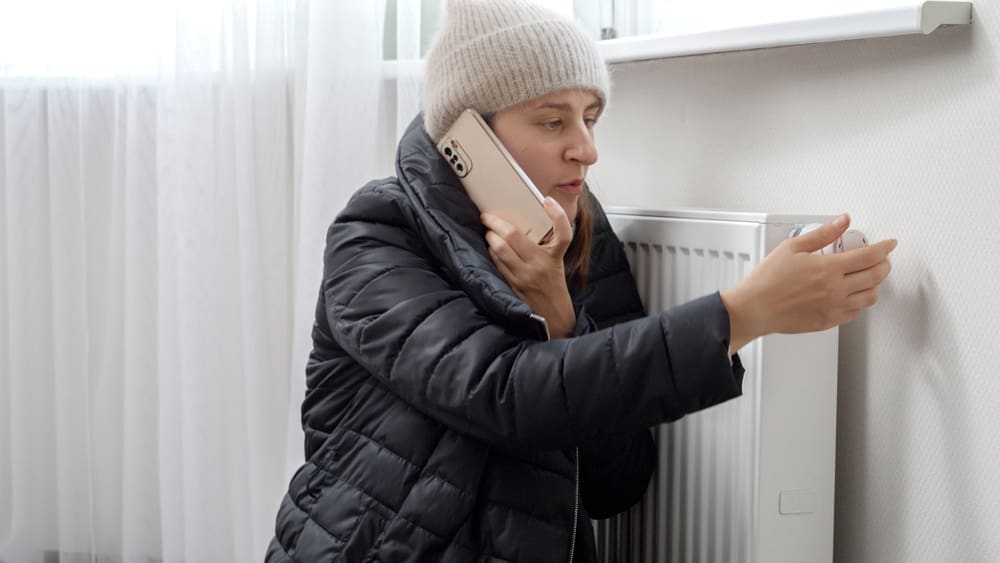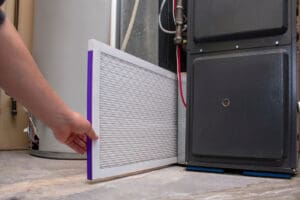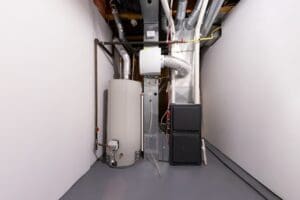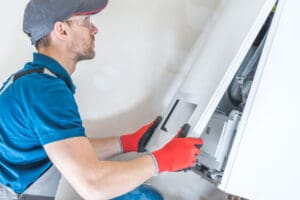
Winters in the Bay State are nothing short of frigid. And as the temperature drops, our reliance on our furnaces increases. But with frequent use comes wear and tear.
Unfortunately, heating systems aren’t immune to issues. Keep reading as we break down common furnace problems and what you can do to nip them in the bud.
What Are the Most Common Furnace Issues?
Forewarned is indeed forearmed, especially regarding your household’s comfort and safety. Check out some of the most common furnace problems below.
Your Thermostat Isn’t Working
A thermostat is your furnace’s control hub, dictating when, where, and how much heat to circulate. If your thermostat is malfunctioning, you might experience inconsistent temperatures or a total absence of heat.
Replace the batteries, then double-check the settings. Sometimes a simple reset is all it takes to resolve a thermostat issue.
Dirty or Clogged Filters
Dust and other airborne particulates build up in filters over time, blocking the flow of air and forcing your furnace to work overtime. This not only increases your energy bill but also heightens the risk of overheating.
In general, you should aim to replace your filters every three months, or more frequently if you have pets or those with allergies in the house. Check the manufacturer’s instructions for a more specific timeline.
Starting Mechanism Isn’t Working
Just turned on your furnace and nothing happened? Almost every model out there uses either an electronic ignition or a pilot light to kick things into gear. Even if every other component works flawlessly, your appliance will fail if the pilot light or ignition fails.
It’s always worth calling a specialist for this one. Attempting to fix ignition problems yourself is too risky.
Cracked Heat Exchanger
The heat exchanger is the heart of your furnace. This component transfers heat from the combustion gasses to your respective rooms. Even the smallest crack in a heat exchanger can lead to a carbon monoxide leak, which is a major health hazard.
Signs to watch out for include:
- Strange smells similar to formaldehyde
- Soot buildup
- Physical symptoms like headaches or flu-like symptoms
- Noisy furnace operation
- Frequent cycling
Don’t risk your health and safety. Switch off the system and ring up a professional.
Limit Switch Malfunction
The limit switch shuts off the burner when it detects temperatures reaching maximum levels. It helps maintain a balance and prevents your home from becoming a sauna. In case your limit switch malfunctions, enlist the assistance of a technician to prevent more damage.
Furnace Isn’t Blowing Air
Run your hand near the vents. Do you feel a breeze? If not, it’s likely a blower problem. The blower is responsible for circulating warm air.
A blower typically comprises a capacitor, belts, fan blades, and ball bearings. Replacing the faulty part is no small feat for an average homeowner, so you might want to leave it to the pros.
Damaged Blower Belt
Your blower belt is a key component of your furnace. Much like the belt in your car, if it breaks, moves out of place, or experiences other issues, you’ll need professional assistance.
Tripped Circuit Breaker
Sometimes your furnace may stop working because of a tripped circuit breaker. This usually happens when the heater draws more power than the system can handle, causing it to trip and save your home from electrical problems.
It’s a cinch to fix — just flip the breaker switch back to its original position. However, if it becomes a recurring issue, you might want to dial up an electrician to carry out a thorough inspection.
How Do You Troubleshoot a Furnace Problem?
Heating is not a luxury — it’s a necessity for our daily routines. It creates an environment conducive to comfort, productivity, and overall well-being.
You can use this furnace troubleshooting checklist to guide you through the basic steps.
Electricity Supply
Maybe you forgot to turn on the power switch. Also, see if your furnace has access to a working power supply. It might sound trivial, but it’s an easy oversight that happens more often than you’d believe.
Gas Supply
Does your model run on fuel? Just make sure the valve is on. The switch should lie parallel to the gas line.
When everything seems in order, yet you have heater issues and other gas appliances remain unresponsive, give your utility company a call to investigate potential supply issues.
Other Culprits
If the previous steps failed to make a dent, take a deep breath and start:
- Setting your thermostat to heat and adjusting the temperature five to ten degrees higher than the ambient temperature
- Cleaning your HVAC system’s drain pan
- Replacing dirty air filters
- Ensuring the furnace access panel is firmly in place
Why Is My Furnace Running, but There’s No Heat?
Do you feel air circulating but there’s no heat? Never keep a unit running in this condition. Not only will it bump up your utility bills with nothing to show for it, but the heating system malfunctions will also likely worsen over time.
You might have:
- A poorly calibrated thermostat
- Pilot light issues
- Damaged ducts
- A faulty gas valve
Your Go-To Furnace Repair and Maintenance in Springfield, MA
Why take a gamble on one of your most-used home systems? Call Hurley & David, instead. You can expect prompt, tailor-fit solutions to your heater issues, friendly and responsive customer service, convenient financing options, and so much more.
Dial 1-413-422-6146 or book a service online; say goodbye to common furnace problems without upsetting your daily routine. Our crew will ensure your system runs smoothly long after they leave.


